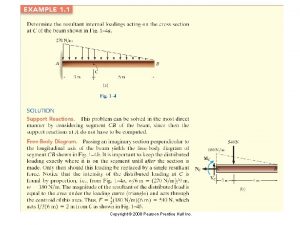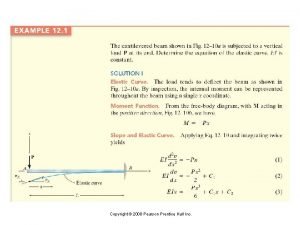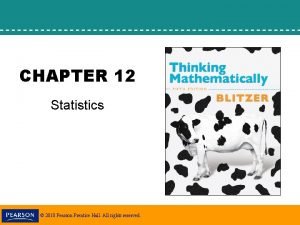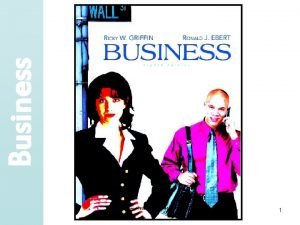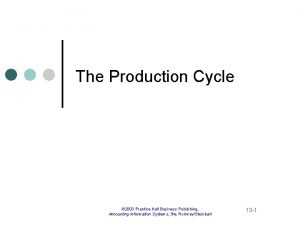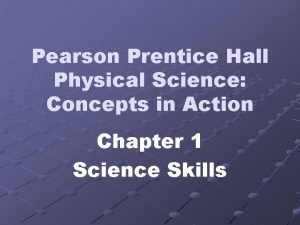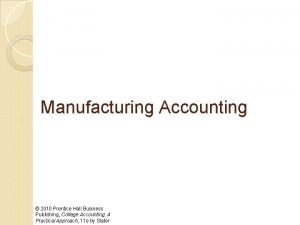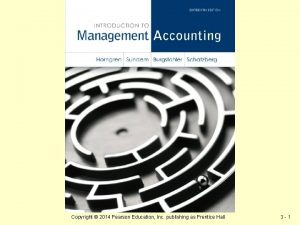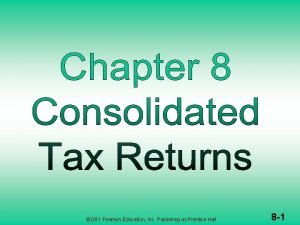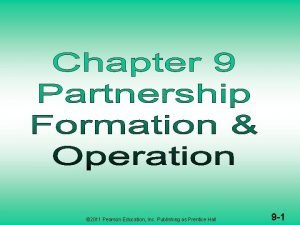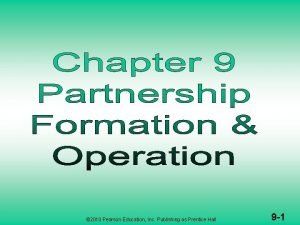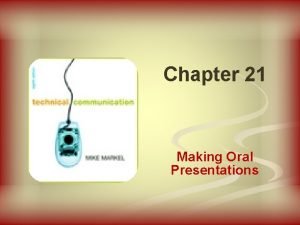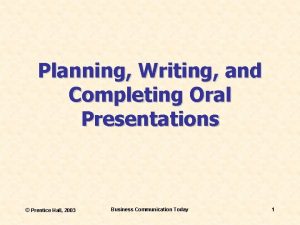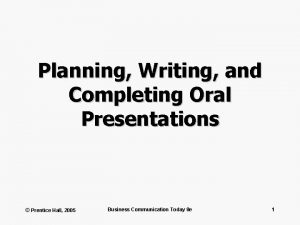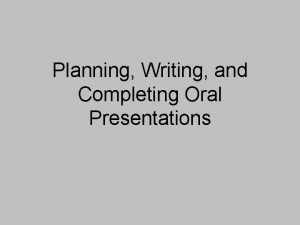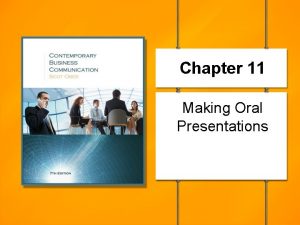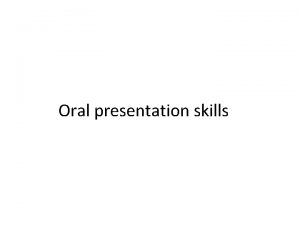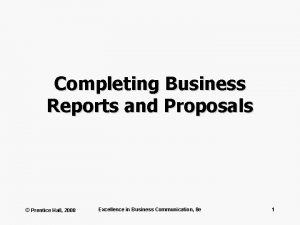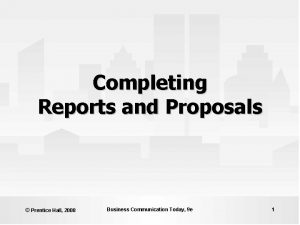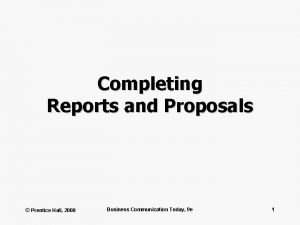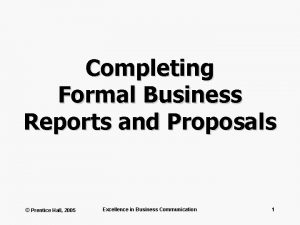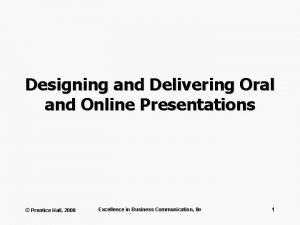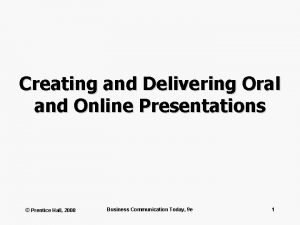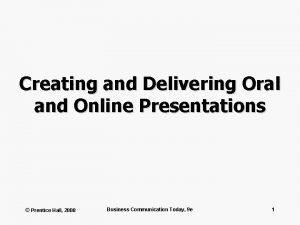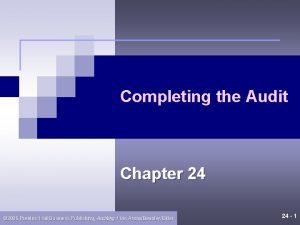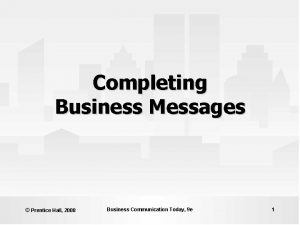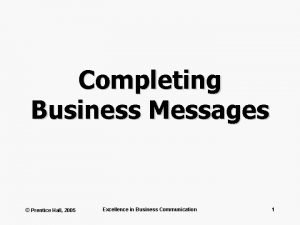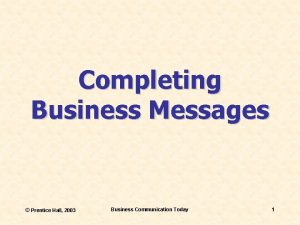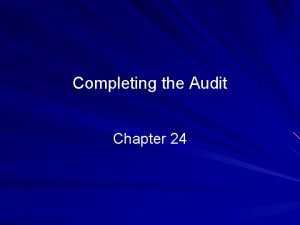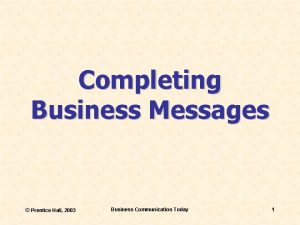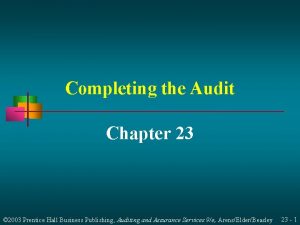Planning Writing and Completing Oral Presentations Prentice Hall




























- Slides: 28

Planning, Writing, and Completing Oral Presentations © Prentice Hall, 2005 Excellence in Business Communication 1

Three-Step Process • Planning • Writing • Closing © Prentice Hall, 2005 Excellence in Business Communication 2

Planning the Presentation • Determine the purpose • Analyze the audience © Prentice Hall, 2005 Excellence in Business Communication 3

Writing Oral Presentations • Organize the message • Develop the opening • Compose the body • Write the conclusion © Prentice Hall, 2005 Excellence in Business Communication 4

Organizing the Message • Define the main idea • Limit the scope • Choose the approach • Prepare the outline • Choose the style © Prentice Hall, 2005 Excellence in Business Communication 5

Developing the Opening • Arouse interest • Build credibility • Preview the presentation © Prentice Hall, 2005 Excellence in Business Communication 6

Composing the Body • Limit the main points • Connect the ideas • Engage the audience © Prentice Hall, 2005 Excellence in Business Communication 7

Writing the Conclusion • Restate the main points • Describe the next steps • End on a strong note © Prentice Hall, 2005 Excellence in Business Communication 8

Using Visual Aids • Clarify main points • Create interest • Add variety • Improve learning © Prentice Hall, 2005 Excellence in Business Communication 9

Common Visual Aids • Overhead transparencies • Electronic presentations • Chalkboards and whiteboards • Flip charts • 35 -millimeter slides © Prentice Hall, 2005 Excellence in Business Communication 10

Other Visual Aids • Product samples • Scale models • Audio tapes • Film strips and movies • Television and videotapes © Prentice Hall, 2005 Excellence in Business Communication 11

Overhead Transparencies • Advantages – Inexpensive – Easy to use – Simple to create © Prentice Hall, 2005 Excellence in Business Communication 12

Overhead Transparencies • Disadvantages – Lack of flexibility – Fragile format – Overhead projectors © Prentice Hall, 2005 Excellence in Business Communication 13

Electronic Presentations • Advantages – Real-time data – Multimedia – Flexibility and portability • Disadvantages – Specialized equipment – Technique versus content – Overuse of special effects © Prentice Hall, 2005 Excellence in Business Communication 14

Six Tips for Success 1. Set up early 2. Bring two of everything 3. Back up your programs 4. Secure technical support 5. Avoid real-time Internet use 6. Have a contingency plan © Prentice Hall, 2005 Excellence in Business Communication 15

Creating Effective Slides • Content and graphics • Design elements • Consistency • Special effects © Prentice Hall, 2005 Excellence in Business Communication 16

Readable Content • Select a central idea • Limit the content • Write short phrases • Use parallel grammar • Prefer the active voice • Use short informative titles © Prentice Hall, 2005 Excellence in Business Communication 17

Effective Graphics • Reduce details • Avoid repetition • Shorten numbers • Limit data • Highlight key points • Adjust size and design © Prentice Hall, 2005 Excellence in Business Communication 18

Design Elements • Color schemes • Background design • Fonts and type styles • Consistency © Prentice Hall, 2005 Excellence in Business Communication 19

Animation and Special Effects • Transitions • Builds • Hyperlinks © Prentice Hall, 2005 Excellence in Business Communication 20

Effective Handouts • Complex charts or diagrams • Company reports • Magazine articles • Case studies • Lists of Websites • Copies of slides © Prentice Hall, 2005 Excellence in Business Communication 21

Complete the Presentation • Evaluate the message • Edit the content • Develop visual aids © Prentice Hall, 2005 Excellence in Business Communication 22

Practice Your Delivery • Memorizing • Reading • Impromptu speaking • Speaking from notes © Prentice Hall, 2005 Excellence in Business Communication 23

Presentation Preparation • Practice your delivery • Introduce the slides • Limit the number of slides • Prepare the location • Consider cultural diversity © Prentice Hall, 2005 Excellence in Business Communication 24

Build Your Confidence • Prepare extra material • Take a few deep breaths • Rehearse • Be ready • Think positively • Get comfortable • Visualize success • Don’t panic • Keep going © Prentice Hall, 2005 Excellence in Business Communication 25

Appear More Confident • Don’t rush • Maintain eye contact • Stand tall • Control gestures • Use your voice © Prentice Hall, 2005 Excellence in Business Communication 26

Answer Questions • Focus on the questioner • Respond appropriately • Maintain control • Survive the hot seat • Motivate questions © Prentice Hall, 2005 Excellence in Business Communication 27

Conclude the Presentation • Prepare the audience • Answer the final question • Summarize the main idea • Thank the audience • Leave with confidence © Prentice Hall, 2005 Excellence in Business Communication 28
 Developing oral and online presentation
Developing oral and online presentation Pearson education inc publishing as pearson prentice hall
Pearson education inc publishing as pearson prentice hall 2008 pearson prentice hall inc
2008 pearson prentice hall inc 2008 pearson prentice hall inc
2008 pearson prentice hall inc 2005 pearson prentice hall inc
2005 pearson prentice hall inc Pearson prentice hall
Pearson prentice hall Prentice hall inc
Prentice hall inc Prentice hall careers
Prentice hall careers Prentice hall america pathways to the present
Prentice hall america pathways to the present Pearson education inc. publishing as prentice hall
Pearson education inc. publishing as prentice hall Prentice hall publishing
Prentice hall publishing Prentice hall african american history
Prentice hall african american history Pearson physical science concepts in action
Pearson physical science concepts in action Pearson education inc publishing as pearson prentice hall
Pearson education inc publishing as pearson prentice hall Ocean fisheries
Ocean fisheries Pearson prentice hall
Pearson prentice hall 2005 pearson prentice hall inc
2005 pearson prentice hall inc Pearson education inc publishing as pearson prentice hall
Pearson education inc publishing as pearson prentice hall Pearson prentice hall
Pearson prentice hall Prentice hall business publishing
Prentice hall business publishing Pearson education inc. publishing as prentice hall
Pearson education inc. publishing as prentice hall 2012 pearson education inc
2012 pearson education inc Pearson education inc. 2012
Pearson education inc. 2012 Chapter 4 job costing
Chapter 4 job costing 2011 pearson education inc
2011 pearson education inc 2011 pearson education inc
2011 pearson education inc Pearson education inc. publishing as prentice hall
Pearson education inc. publishing as prentice hall 2010 pearson education inc
2010 pearson education inc Types of oral presentations
Types of oral presentations


